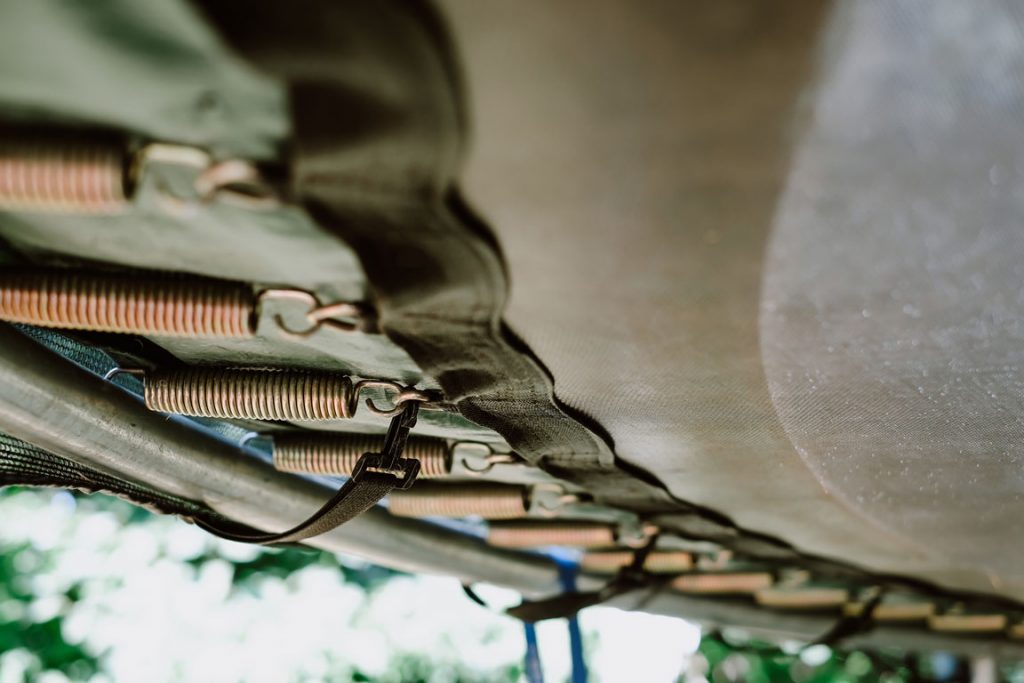The warm weather has arrived which means you may be buying or getting out the trampoline for your kids. As many people know, without springs, there can be no trampoline. However, there are several important features to a spring that greatly impact the jumping experience and do more than just provide the bounce. Trampoline springs play a significant role in the safety of the bounce as the length of the spring and diameter of the coil make a spring perform a particular way.
Short vs. Long Springs
Creation of the kind of upward momentum on a trampoline is possible due to the strong, elastic fabric of a trampoline, combined with the many springs that support it. When a person jumps on a trampoline and their body weight comes back down, it stretches the springs. The springs then try to return to their original shape, causing everything to tighten up and the person on the trampoline to go upwards again. The constant jumping up and down can cause much strain on the springs, thus it’s important to know what kind of springs your trampoline has. A higher quality spring will have a better effect on stretching and the energy transfer rate. The diameter of the spring coil will also affect the quality of the spring stretch. For example, if two springs are the same length, the larger spring will generally have a better bounce.

If your trampoline springs are short they simply cannot stretch as much causing a much stiffer and harsher bounce. When a spring on a trampoline stops stretching, you’ll feel a very sudden stop in the downward motion of the jump mat. This “short stop” is very hard on your joints and back. Short trampoline springs give out relatively easy as they are often made with lower quality steel and are cheaper to make.
In contrast, a trampoline spring with a longer coil has a longer stretch length, which helps the energy transfer to be slightly slower, resulting in your body absorbing and transferring the energy from the trampoline springs more consistently. Any spring shorter than 7 inches should be avoided, especially for harder use jumpers like young teens. The better springs range in length from 8 to 10 inches and will last longer. In essence, the length, diameter, and grade of wire used work together to determine the quality, safety, and comfort of the bounce.
Types of Trampoline Springs
Recreational Steel Springs
These types of trampoline springs are commonly used in a person’s backyard. Steel Leaf Springs are found on Vuly trampolines and Composite Rods are found on Springfree Inc. trampolines.
Competitive Springs
These types of springs on trampolines are often used for gymnast competitions and other sports as they are heavy–duty springs. These kinds of springs come with an expensive price tag.

Inspect Those Springs
When a trampoline is designed, commission engineers will design springs that can handle the weight capacity that is compliant with the product’s purpose. However it is always important to inspect all trampoline springs periodically and the ones that are over-stretched, loose or have damaged hooks should be replaced immediately as this is a big safety risk.
Contact Ajax Wire Specialty at (708) 629-0921 for replacement trampoline springs. We stock 5.5 inch, 7.0 inch, and 9 inch.


